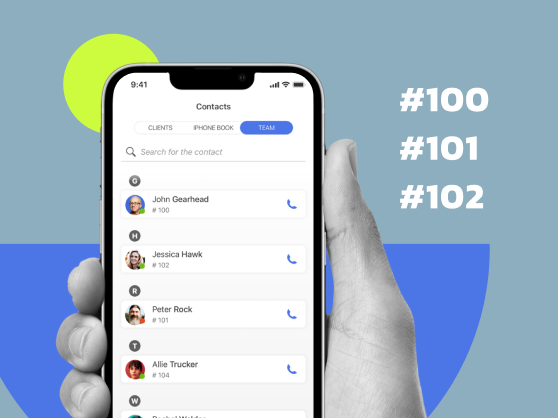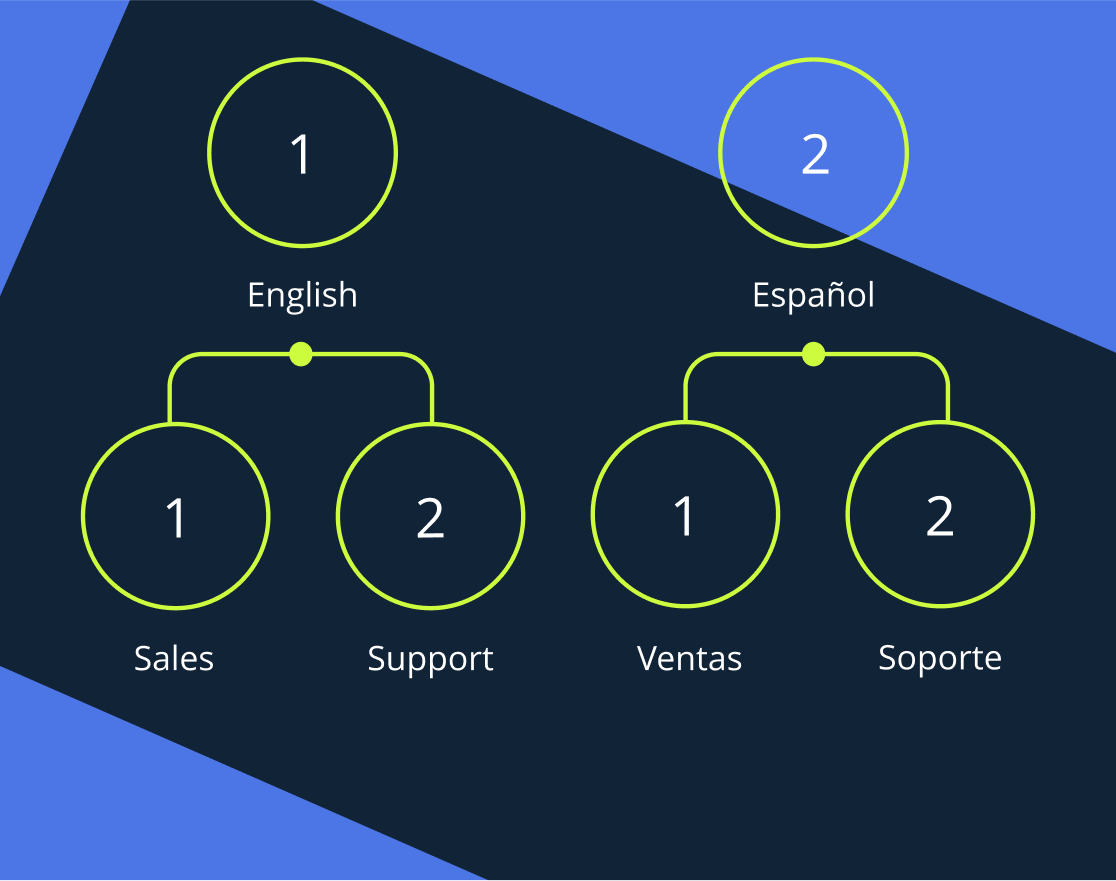When operating a call center, you and your army of agents need to be able to speak to as many people as possible in a day while, at the same time, providing a top quality call experience. Dealing with difficult to hear callers (or just plain difficult callers), accessing different information quickly, staying polite – all are call center quality assurance aspects which must be mastered in order to provide effective service.
In this article, we’ll be going through the ins and outs of call center quality assurance guidelines. This is not an exact science – it is hard to measure call center quality, though as we discuss below, there are ways – but if you keep our tips and tricks in mind, you’ll come out just fine.
- What is a call center quality assurance?;
- Why is quality assurance important in a call center?;
- How to measure call center quality assurance?;
- How can MightyCall help with call center quality assurance?;
- Methods of quality assurance in a call center;
- How to create a quality assurance framework for a call center;
- Call center quality assurance best practices;
- Call center quality assurance challenges;
- Tips to improve call center performance;
- Undertaking call center QA today is key to success in the future.
What is a call center quality assurance?
Call center quality assurance (QA) is taking the time to ensure that your agents are providing the best possible service to customers. This means giving enough time to each customer and providing the correct information, along with staying polite and friendly. Conducting QA can include call monitoring, asking customers for happiness surveys, and other methods.
Why is quality assurance important in a call center?
Without an effective call center quality program, you are likely going to encounter serious problems. Why? Because QA is key to running a call center. Here are just a few reasons:
Making sure everything is working as intended
The most important part of call center quality control is, at the end of the day, making sure that you are providing the service you are supposed to be providing. Literally nothing matters more than that. If you are not providing service in the first place, it does not matter if an agent is being slightly impolite or talking too long. They could be the kindest agent in the world, but if they’re chatting about their grandmother’s recipe for chicken soup instead of providing the information they are supposed to be providing, then things are not working.
Increasing agent success rates
Now, even if things are working, that does not mean that they cannot be improved. A successful call center quality assurance framework can help your agents not only survive, but thrive. Quality management can help call center agents to figure out what they might be doing wrong, or even just what they could be doing better.
Save yourself from legal trouble
This one is unfortunate, but very necessary. Lots of things are said and done over the course of a single day for a single call center performing customer service. Sometimes, people are misheard – and sometimes, they just want to take advantage. Quality assurance can help protect you from those who would do you, your agents, or your call center legal harm.
Seeing what more you could be doing
Finally, a strong call center QA strategy can help you to notice things you would never have noticed before. Calls which are even half a minute too long might not get your attention; but over a period of time, that can really add up. Due diligence can make your company more effective.
How to measure call center quality assurance?
As we may have mentioned before, call QA assessment is not an exact science. However, measuring call quality is generally done via three methods:
- QA assessment: Here, the person in charge, or a specially hired individual, analyzes some recorded calls. They may have their own scoring method, or may use yours; however it’s decided, they review the data and then inform you of what their findings are. You can then do what you wish.
- Call metrics: Contact center’s call statistics, or how long the calls are (or how short), who is making them, whether they are incoming/outgoing – are all analyzed, often in conjunction with our next option.
- Customer metrics: You may, however, just want to measure customer satisfaction. Are they happy with your service? This type of quality assurance can be done by attaching a survey – oftentimes done without the ability of the call center agent to hear it, via IVR – to the end of the call. However, these metrics can also include things about the customer: did they agree to a sale, how old are they, what is their gender, what is their salary. The more information, the stronger the contact center QA can be.
How can MightyCall help with call center quality assurance?
MightyCall offers lots of important features to help you run your call center to the best of your ability.
- Call monitoring: Being able to manage is a central part of what call center QA is. That’s why MightyCall helps cloud call centers operate by letting managers monitor ongoing calls, without the person on the other end of the line knowing that it is being monitored at that given moment
- Call recording: This is a fundamental aspect of the QA process in a call center. Being able to record calls and listen to them later can help improve call center agent performance (via listening to it with the agent), can be used in court cases as evidence, and can help see what was missed in a call.
- Call barging: But sometimes, monitoring is not enough. At times, managers require action. That can mean the manager uses call barging to forcibly enter a call for whatever reason they may need.
- Call intercept: For a weapon of last resort, a manager can also use intercepting – when the agent is kicked off the call and replaced by the manager.
- Call whisper: When a lighter hand is needed, managers can use whispering, which lets them talk to the agent without the person on the other end of the line knowing.
- Multi-Level IVR: This is a key feature MightyCall offers. With the ability to have multiple levels of customer interaction menus, you can send callers exactly where they need to go – even if your agents are spread out across a large geographic area.
Methods of quality assurance in a call center
While this all isn’t an exact science, it generally can be broken down into understandable categories by QA experts. They’re likely talking about one of three options: Operational, Tactical, and Strategic.
Operational
When it comes to monitoring quality control on a day to day basis, that falls to operational frameworks. This detects how things go every day and concerns issues like the First Call Resolution rate, along with other important call center KPIs.
This is one of the more fundamental things that good quality management can detect. If you’re not providing quality day to day service, long term strategy doesn’t matter – you won’t last long enough to merit one!
There are of course pros and cons to focusing on this type of QA in a call center, however. While it can help you realize you are missing some fundamental aspects of running a call center, if you focus too much on the little issues you may forget to focus on a long term strategy. Being able to balance those two things is rather crucial.
Tactical
At the tactical level in the call center quality assurance process, we zoom out a bit more. Here there is less of a focus on the small fundamentals (like what individual agents can do) and more focus on how mid-level managers are running their team. Are agents being properly informed on what they should be pursuing or highlighting with callers? Is training running smoothly?
This call center QA framework is important because, when searching for QA issues, many people can either focus on the bottom level or the top level. But the middle, where many problems can sometimes be found, goes overlooked.
Strategic
Finally, we come to strategic. This call center QA framework focuses on what might be the most awkward part of the call center QA process for call center ownership: their own work. Here, agents will look to see what the center is doing long term. Is there a vision? Has leadership effectively stapled “Dial, talk, repeat” to each cubicle or email signature, or are they thinking bigger?
This study may be more uncomfortable and it may give leadership things they do not want to hear – but in order to stay competitive, it’s best to listen in.
How to create a quality assurance framework for a call center
So, you have decided you want to do some QA – but you don’t know how to conduct it. No problem! Here are some steps to take. As we said before, this is all rather fluid – if there are particular aspects you’d like to focus on, feel free to pick those.
1. Make a framework based around your needs
The most important part of quality assurance is actually knowing what you want to examine yourself for. You should absolutely resist simply saying “Well, everything!” There are specific KPIs such as Average Call Handling Time (AHT), First Call Resolution (FCR), Net Promoter Score (NPS), Agent Utilization Rate, and more. Do some research on the specific areas you’d like to examine.
2. Decide whether or not to keep it in-house
This next question is key. If you do it yourself, obviously you will be saving money, and you can more tightly do it your way. This is certainly a benefit. However, it has two main issues.
The first is that if you have never actually undertaken contact center quality assurance, you might not know exactly what it is you are doing. The second to worst thing would be getting lots of useful data but not knowing how to use it – and the worst thing would be going through your whole program and coming out the end with useless data.
The second issue is that you are (probably!) a human, which means you have personal biases and likely are not going to be 100% honest when critiquing yourself. An outside hire is going to have cause to tell you the brutal, honest truth; if you are not sure that you can manage that for yourself, it might be a good idea to have someone else tell you the news.
3. Collect your data
There are lots of ways to collect data. You can have call center agents ask if people are happy with their service, though if they are talking to the agent directly they may be less likely to tell the truth. You could have an automatic survey option at the end of all calls (this is a common feature of call center quality assurance programs). Or, if you collect emails, you can also email callers and ask what they thought.
Some centers choose to incentivize answers with things like gift cards. This is up to you, and can have its own benefits, but many also opt for this.
4. Use your data
Now that you have your data obtained from call center quality assurance, it’s time to use it. Have you discovered that some agents are slacking? Have you directed people to use the wrong sales strategies when calling? Acting on your data correctly will make or break the entire process.
Call center metrics for reporting and analytics
Enhance your contact center’s performance by using MightyCall’s metrics.
Call center quality assurance best practices
Of course, while there are lots of ways to personalize your own attempts at measuring call center quality, there are some things to keep in mind which really go across all the different varieties of QA. When reading, see if you have incorporated these best practices for call center QA into your plan:
Create QA framework
We discussed frameworks above, but it cannot be overstated: you need to have some sort of framework when going into your own QA. Whether you just want to focus on one small thing or lots of really large aspects, you should never go in blind. That’s the path to low quality data, wasted time, and no forward progress.
This does not mean that you need to map out every single aspect of what you’ll do for your own call center quality management, or that you need to be neurotically concerned with every single thing going right. As you go through the process, you may realize that you could tweak some aspects. That’s fine – it should be flexible. But you should at least, first, have a process to begin with.
Remember the difference between automatically collected data and manual data
When building your call center quality assurance program, you should keep in mind that, while you will be collecting both automatic data and manual data, you should get good amounts of both.
For those unaware, the former type is “automatic” in that it’s things like call length/numbers/people being talked to. The latter is manual, which requires the caller to make a response (in a poll or in an IVR). Having both is key to having conducted a successful call center QA method and useful amount of data.
Set correct schedules
When you are conducting call center QA, it’s important for you to remember that you are still running a call center. People still need to do their jobs. If you have agents have to go through a super long spiel asking this or that question, or you have other invasive methods, that’s fine – sometimes you have to do what you have to do – but if you do it constantly, or always at high volume call times, you may muck up your customer interactions and call quality may decrease.
Think about breaking it into sections; maybe try to test different departments simultaneously, but only piecemeal. Or, test one department at a time to make sure everything else can continue to run smoothly. How you do it is up to you.
Use call center QA software
You can do all of this with a spreadsheet and a pen. It will be a lot harder, but if you like the old fashioned methods, go with it! However, if you want something faster – and something which can give you a lot more quality control for call centers – we might suggest using some call center QA software. This can help you to organize the path you will undertake and can help to make sure you do not make any mistakes which can interfere with your data.
Call center quality assurance challenges
Like anything else worth doing, QA comes with its fair share of challenges. Some of them are difficult, but all of them are manageable – provided you go in prepared and ready for anything. Because remember, it’s not just you who is being tested – it’s your entire operation, including people who may not like being told they are in the wrong.
Telling someone they need to improve
This can be, bluntly speaking, awkward. To have quality in a call center, you have to be able to actually solve the problems. And this can mean helping people to improve on what they are doing wrong. Some bosses are great at this; some, on the other hand, absolutely loathe it, especially if they have difficult employees.
When you realize someone is doing something wrong, offer ways of improvement. Make sure that you point out what your call center QA has found that they are doing right as well as what they could also improve upon.
Getting enough quality data
So let’s say you decided to embark upon your call center QA journey. Great! But you did it in the middle of a really hectic period, like around Christmas or Black Friday. Not great!
And here’s why: when people are in a hectic rush, they are more likely to make mistakes. Little things might get swept away without intention, and things won’t be running normally. When you want to undertake a successful QA program, you want to make sure to get data from when you are normally operating.
This is not to say that you should never test during high stress periods; in fact, it can be a great idea to do so. But if this is your first time doing quality assurance in a contact center, you might want to leave the more advanced stuff for the second round.
Figuring out why things are going wrong
Once you have the data, you are not necessarily done – you need to now figure out why it says what it says. Quality assurance in a call center means gathering data, but it also means interpreting it. The data will not inherently tell you what it means, you have to figure that out for yourself.
And here is where you need to be careful, because your biases that we mentioned earlier can come out in full bloom here. If you have undertaken quality assurance with a suspicion that something is wrong, you will probably find that, if the data even feasibly indicates it, that you were correct. So try to withhold judgment until you really have a clear view of why the data stands the way it stands.
Tips to improve call center performance
When first conducting quality assurance, the task can appear daunting. But fear not! It will be easier than you think. Just follow along with these QA tips for call center and you will be off to the races:
- Take advantage of call monitoring: Lots of managers may feel uncomfortable listening in on their workers (feeling like they are spying) or they may just think it is not necessary. They would be wrong! This is simply a way of making sure that things are going well and smoothly. A captain is not wrong for inspecting his ship, after all.
- Utilize call recording: This is one of the most useful VoIP features and key to BPO quality assurance, and there is a reason it is so popular. Being able to record a call means being able to walk your agents through what they are doing right and what they can improve upon.
- Don’t make it a one time thing: proper QA requires that you do it again and again. It does not mean you constantly need to run it, as that could be expensive or simply a nuisance. But it does mean that you should regularly do it to see if you have improved over time.
- Take advantage of your team structure: Empower everyone when you are conducting quality assurance, not just those at the top. If everyone feels a part of things, they will be more willing to improve themselves. So bring middle managers down into the mix.
- Check call statistics: Call statistics is another VoIP feature which can help give you an overview of how things are going. Not only that, they can run automatically, which means you do not have to partake in any extra quality assurance; so you can always keep abreast of the day to day changes.
- Think boldly: if you have your data results but you still are not reaching the quality in a call center that you’d like, then don’t be afraid of making big changes. Sometimes a total rework can be in order.
- Keep security in mind: The QA data you have can be sometimes confidential, relating to customers or your agents’ personal information. Don’t leave it around (physically or digitally) where it can be easily stolen.
- Keep an open mind: More than anything else, you do not know what may come your way when you have finished conducting quality assurance in a call center. So be ready for anything!
Undertaking call center QA today is key to success in the future
Whether you are a BPO, a KPO, or another type of call center, call center quality assurance is something you simply cannot ignore. The little mistakes you or your team may be making without even noticing it can really add up – and soon, you literally may not be able to ignore them.
Good QA, along with a full-on call center platform with the features which can help you compete with the best, is the pathway to great success. So get started today!












